Natural oils are increasingly used for wood finishing. The turn towards nature, towards natural products, the growing organic trend, has made many people want to use natural oils when they have to protect a piece of wood. But not all finishing products that say oil are natural 100%. Moreover, there are several types of natural oils, and clarification on their use is needed.
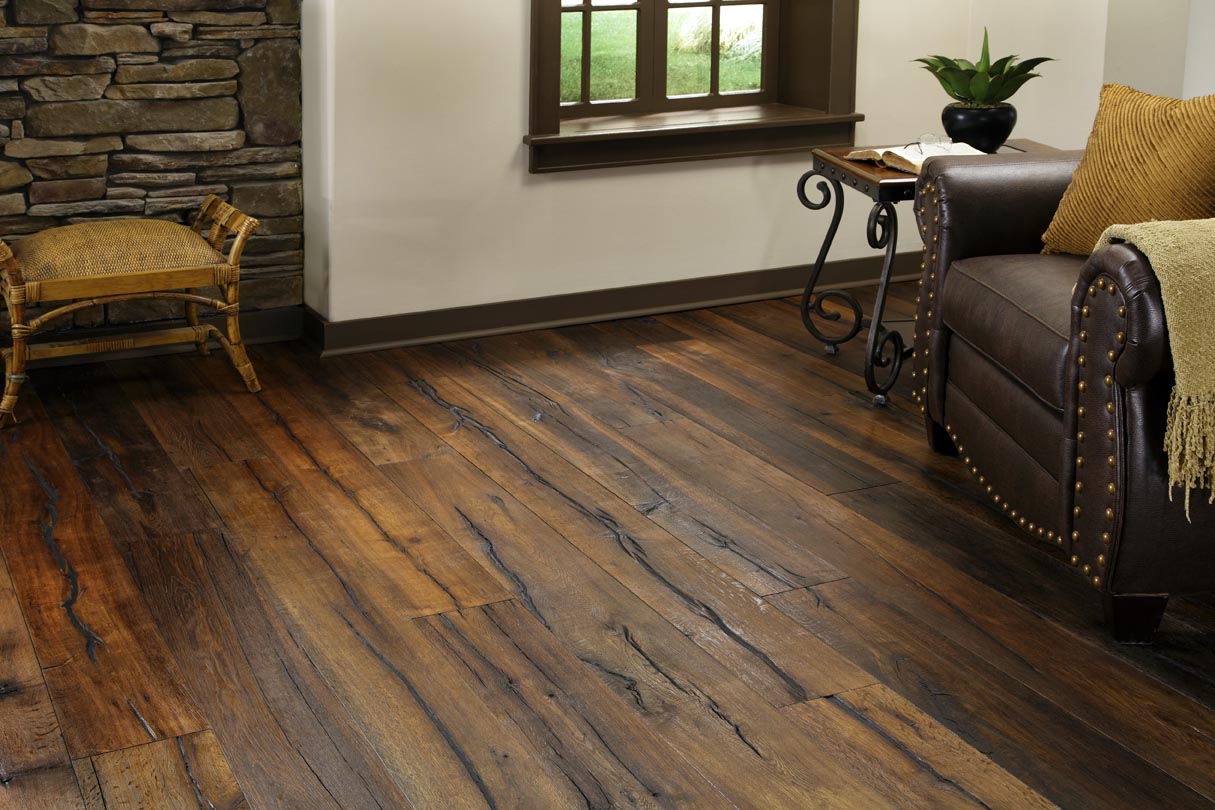
photo source: cosca.org
Linseed oil, natural or enriched
Linseed oil is one of the most widely used products in Europe. Natural linseed oil obtained by pressing linseed is very difficult to dry, and the process takes weeks. To speed up the drying process, the oil is boiled at 280-300 °C. The result is still a natural product and the drying time is significantly reduced. To protect the wood, 3-5 coats of oil are applied, with a drying time of at least 24 hours between coats.
Drying can also be accelerated by adding chemicals called siccatives, and one such linseed oil is called sicativat. The addition of siccative substances removes the oil from the range of natural products altogether. If you want a completely natural or organic product, the recommendation is to check the label where no chemical content should appear.
Linseed oil is also used to make alkyd paints. In this case it is no longer an organic product because it is mixed with alkyd resins and synthetics obtained through chemical processes. Further information on linseed oil can be found at here.
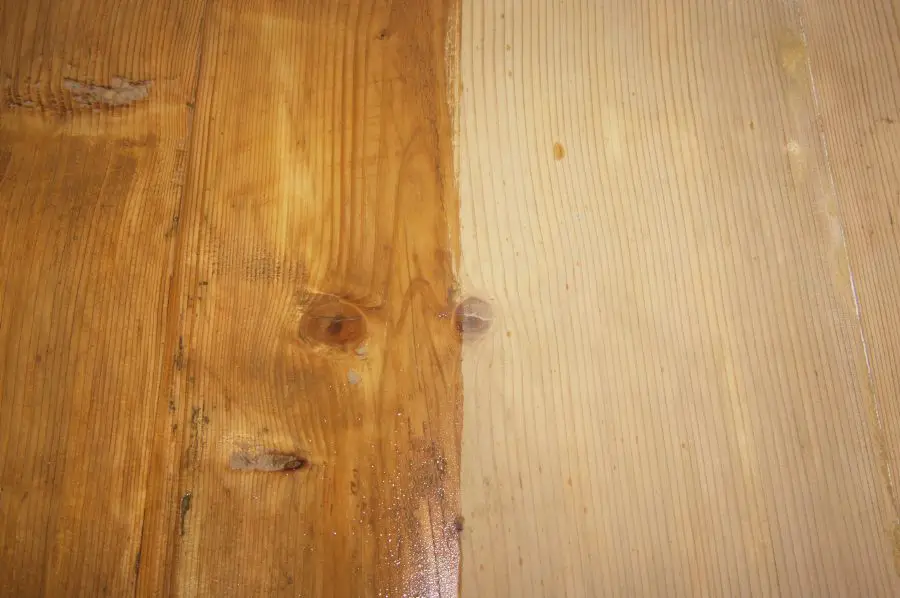
Tung oil - natural, non-toxic and resistant
Withtung oil the strongest and most beautiful natural wood finish is achieved. It is made by pressing the seeds of tung nuts, a tree that grows in central and southern China around the Yangtze River. It has been used since ancient times and is mentioned in the writings of Confucius around 400 BC. The Chinese used the oil to impregnate the wood of boats, leather, paper and even clothes to make them waterproof. Learn more about tung oil here.
Tung oil can be used alone or mixed with other types of oil. A special method of application is recommended to achieve maximum results. The first coat is applied normally with a cloth and then left to dry for 20-24 hours. The second coat is applied by sanding, putting a little oil on the sandpaper. This allows the oil to penetrate deeper into the wood. A presentation of the method can be seen here.
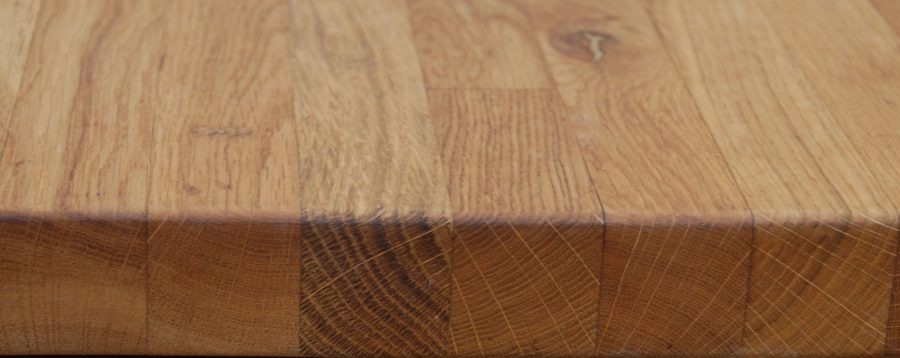
photo source: tungoil.co.uk
Danish oil - a blend of oils
Finishing with Danish oil (Danish oil, in translation) is the most common on specialist websites. It is not a product with a fixed composition, but a generic name for a mixture of oils. The name comes from the lacklustre appearance of Scandinavian furniture and originated in the second half of the 20th century, when such furniture began to be exported worldwide.
The composition is different depending on the manufacturer. In the Danish oil formulation you can find natural vegetable oils (tung oil, linseed oil, poppy oil, soya oil), mineral oil, natural and synthetic resins, white spirit, additives. The body of the oil (the solid substance remaining after evaporation of the solvent) can vary from 10% to 50%. Obviously, the product is natural when it does not contain synthetic materials, and its quality is better the more tung oil it contains.
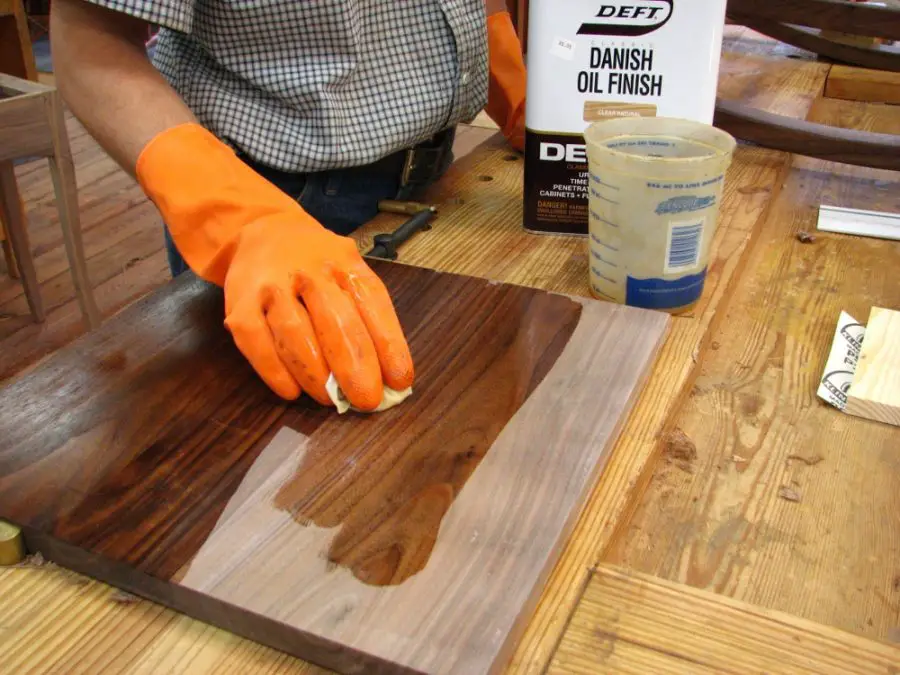
Teak oil - a recommended product for outdoors
Like Danish Oil, teak oil is a mixture of natural oils, synthetic materials, additives and solvents. The name can be confusing because it implies that it is an oil made from teak wood (teak). The name comes from the fact that it is used to finish outdoor furniture, which is often made of teak wood. The main natural oil used for teak oil is linseed oil. Additives used in its formulation make it resistant to UV radiation and environmental factors.
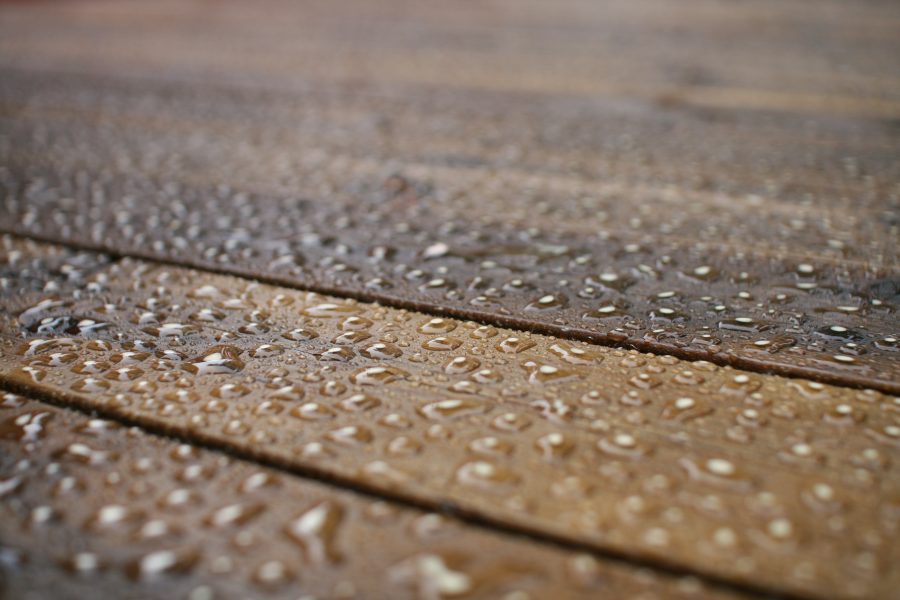
photo source: larre.com
Mineral oil - recommended for kitchen utensils
Mineral oil is a product of the distillation of petroleum in the production of gasoline and other petroleum products. After purification, it is colourless, odourless and can be used in the pharmaceutical and cosmetic industries to make creams and lotions. It is recommended for finishing bowls and wooden kitchen utensils.
The use of vegetable oils is not recommended in this case because the objects become sticky and clogged.
Other natural oils
Natural sunflower, olive, soybean, poppy and safflower oils are also used in oil blends, but they are not used separately for wood finishing. There are also eco-friendly materials such as coconut oil, palm oil and other such oils, which are used locally and can be found on websites or in specialist shops.
General information on the use of oils:
- It is a very popular finishing method used all over the world.
- The moisture content of the wood before oiling should be in the range 6-14%.
- It is best to stain the wood before applying the oil. The stains used should be water-based or solvent-based, not oil-based so as not to reduce the subsequent absorption of the oil into the wood.
- Oils provide protection against moisture, sometimes stains, but not against mechanical damage.
- Applying the oils is simple, with a brush or by wiping with a cloth. After application, excess is removed by wiping with a clean cloth.
- In general, nothing can be applied to oiled surfaces. Water-soluble products peel off and organic solvent-based products are incompatible. The only compatible ones are those based on white spirit (petrosin), but even these, if the wood is saturated in oil, have very poor adhesion. If you wish to apply a coat of varnish or paint, it is best to sand the oiled wood first. Normally the oil does not penetrate more than 2-3 microns into the wood, so it will not be very difficult to remove. Or the object is left for at least 6 months for the oil on the surface to be removed by use or natural factors (rain, wind, sun).
- Oil-finished surfaces need regular maintenance and refreshing.
- Oils presents the phenomenon of self-combustion (light oxidation with heat release) and can cause fires. Never leave oil-soaked rags lying around.
Natural oils have always been used to protect wood. In the past it was only natural oils, now we have synthetic ones. Oil-based products are also used to protect wood that sits outside and are often even more effective than some synthetic products.
I hope you find the above information useful. As usual, additions are welcome. And if you have any questions or queries, please leave them in the space below. I'm sure I'll reply.























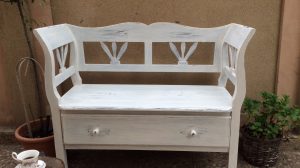

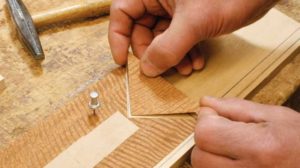

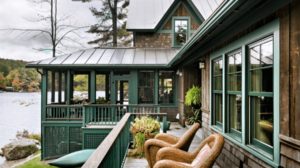


Hello. I have two pieces of furniture that I think are oiled: a rosewood table and an oak desk. The box the table came in actually said - oiled. Both have matt surfaces. What oil could I coat them with without changing the colour and the surface remaining matt? Thank you!
Good evening.
If it says oiled they are definitely oiled. But why would you want to apply another coat? Oil doesn't overcoat. This is what makes the surface matt. If too much is applied the surface becomes shiny and in very hot periods the oil expands and the surface becomes greasy. The oil is applied to the topcoat and then the excess is wiped off.
The best oils for furniture are tung oil or Danish Oil (which is a blend of oils).
All the best.
Hello. I have two recently made traditional peasant chairs with traditional motifs that I would like to give them the same dark to black colour similar to the authentic ones. What oil could I cover them with? Thank you!
Hello.
You can use tung oil or linseed oil. Commercially available natural oils are blends of several types of oil. The best known is Danish oil, an oil that has quite a lot of tung oil (the best and most beautiful) in its composition. The easiest way is to use spicy linseed oil (it dries faster than untreated). Information about oils you can also find here.
All the best!
sicativate does not equal sicativaNt
Hello! Can tung oil or flaxseed oil also be used in resin meals? How does the resin behave with the oil?
Hello.
Oils can only be coated with products that have white spirit as a solvent (oil-based paints, alkyd paints and other such products). Other materials have no adhesion to the oiled substrate. This is also the case for epoxy products. I have never tried to pour epoxy resin on oiled wood, but from what I have read, nobody recommends applying resin over oil precisely because of this lack of adhesion.
All the best!
Hello.I would like in the future to refurbish a peasant house,it is made of oak barrels and I would like to recommend a product that will keep it as long as possible,and on old wooden utensils with what can be given against decay because they are very old.Thank you.
Good evening.
Treatments against caries are quite harsh. The wood should be enclosed in an enclosure where special substances are sprayed (there are specialised companies where you can buy them. A simple search on the net for "antique substances" and you will find them). But first you need to see if the wood has been attacked by decay and if they are still in the wood. In silence you can hear the carrion gnawing on the wood. It is a specific noise, impossible to confuse.
For protection I recommend oil or wax. Oak wood is hard, beautiful and durable and it is a shame to varnish it, especially if it is old. Linseed oil protects it very well, both inside and out. Wax is not as resistant.
All the best!
I have always used antifreeze combined with water for cavities and applied it on wood.Being combined with water and sweet the cavities will "taste the sweetness" and die.
Good to know. Being advice from experience is all the more valuable.
All the best!
Good evening where can I buy Danish oil thank you
Good evening!
Find Danish Oil at Fine Tools (finetools.ro).
All the best!
Don't forget to subscribe to the printed Wood Magazine! For only 58 lei/year you can find out news in the field, discover craft ideas or trade secrets. We remind you that the content in the printed magazine is different from the one on the website. Details in the link below.
Thank you!
https://revistadinlemn.ro/product/abonament-revista-din-lemn/
Good evening! I want to do a walnut cladding on a wall in my bedroom. I would like to mention that the walnut wood will not be planed but just a little bit finished with enamel. I want to bring out the wood grain and the curls from cutting the wood. What oil do you recommend to highlight the wood?
Hello.
Tung oil is the most beautiful and the one that best highlights the wood grain. It is also the most expensive. Another good product is Danish oil. It is a mixture of tung oil and linseed oil. You can also use linseed oil. It is cheaper and there is not much difference between them. Because it's walnut wood, a very beautiful wood with a great design, I would finish with tung oil or Danish oil.
All the best!
Hello,
I have a 1.8 m mulberry wood carving that I would like to put outside, I would like to treat the wood with oil, can you tell me what kind of oil would be suitable?
I would also like the lamn not to crack over time.
How should I proceed?
Sincerely,
Marius Ghete
Hello.
You should use linseed oil-based outdoor polish. To be UV resistant linseed oil needs a slight pigmentation and the lacquers have pigments (even if they are transparent).
With the appearance of cracks it is more difficult. It depends on the moisture content of the wood. Oil allows the wood to naturally exchange moisture with the environment and this is good because it reduces tension. But the water must not be forced out, i.e. the statue should not be placed in direct sunlight. If the humidity in the wood is high, the sun forces the water out and tensions can occur, leading to cracks.
All the best!
Don't forget to subscribe to the printed Wood Magazine! For only 58 lei/year you can find out news in the field, discover craft ideas or trade secrets. We remind you that the content in the printed magazine is different from the one on the website. Details in the link below.
Thank you!
https://revistadinlemn.ro/product/abonament-revista-din-lemn/
Very interesting articles about wood finishing.
I would like to make a jewelry box with a water-based bath. What would be better to give it a shine? Initially I was thinking shellac but it doesn't seem like a process more for the experienced. Is it possible to use an oil to give it the desired shine or do I still have to use a varnish?
Hello!
You can also finish with shellac if you dare to work. For a good result, many coats of varnish should be applied. Below is a link to the application of shellac, maybe it will help.
If you want to have a very high gloss then you should use a high gloss polish (over 90 gloss). It's not easy with polish either because the gloss will apply any flaws and you have to sand between coats.
With oil is the easiest. You don't get mirror shine, but you do get a silky, very nice one. You need to apply 2-3 coats, with 24 hours drying time in between. After application let it absorb very well for 15-20 min and then wipe off the excess. At the end you can leave the oil layer or you can apply a layer of wax and polish it very well the next day with a clean cotton rag or a polishing machine with a polishing pad. You will be delighted with the result.
Good luck!
https://revistadinlemn.ro/2017/08/18/french-polish-metoda-clasica-de-aplicare-a-shellac-ului/
Hello,
I want to make a path in the garden from 8cm thick rounds of acacia. The manufacturer told me that I don't need to apply an oil treatment. I would like to point out that no glue is used, the rounds are placed on a bed of sand a few centimetres thick under which there is a film that prevents the growth of plants. The spaces between the rounds are also filled with sand.
Do you think I should protect the wood with any oil? Thanks
Hello.
The manufacturer is right. Salcam is a very tannic and hard wood, with very good outdoor resistance. It is the wood that can resist very well unprotected outside. Even if it is covered with a layer of mould it is only superficial and if you scratch it you will immediately discover totally healthy wood. And insects have a hard time attacking it because it is hard and dense.
More information about salami can be found in the link below.
All the best!
https://revistadinlemn.ro/2016/11/02/salcamul-cel-puternic-rezistent-si-frumos/
Hello,
I want to make a pathway in the garden out of acacia rounds. The rounds are laid on a bed of sand, and the spaces between them are also sanded, no glue is needed. Is any treatment needed, the producer told me no? Thanks
Hello.
The manufacturer is right. Salcam is a very tannic and hard wood, with very good outdoor resistance. It is the wood that can resist very well unprotected outside. Even if it is covered with a layer of mould it is only superficial and if you scratch it you will immediately discover totally healthy wood. And insects have a hard time attacking it because it is hard and dense.
More information about salami can be found in the link below.
All the best!
https://revistadinlemn.ro/2016/11/02/salcamul-cel-puternic-rezistent-si-frumos/
Hello,
I made a wooden cutlery organizer. (The bottom is 10mm pine plywood and the rest of the wood is beech.) Can you please tell me what I could put on it for the finish considering the cutlery will come in contact with the finish? I exclude paint, I want the wood to show through. Thank you very much, have a nice day.
Good evening.
You have 2 choices, varnish or oil. As varnish I recommend you to use palouretanic varnish or water soluble varnish. Polyurethane varnish becomes inert after hardening and is safe for such uses (even safer than some water-based varnishes). It is also very resistant to scratches or mechanical shocks.
I would go for the oil option. You must use food safe mineral oil. Oiled wood looks great and is very resistant to moisture. The resistance to scratches and shocks are lower and depend on the strength of the wood species used.
All the best!
Don't forget to subscribe to the printed Wood Magazine! For only 58 lei/year you can find out news in the field, discover craft ideas or trade secrets. We remind you that the content in the printed magazine is different from the one on the website. Details in the link below.
Thank you!https://revistadinlemn.ro/product/abonament-revista-din-lemn/
[...] and against decay, the wood must be protected with varnishes or natural materials (wax, oil). These require regular maintenance. In addition, the house itself should be checked a [...]
Good evening I would like to buy Danish oil and I don't know where you could guide me, thank you.
good evening, where can I get a food oil for oak?thank you!
Good evening!
I suspect you need food safe mineral oil. It is the oil used for finishing chopping boards, bowls or other wooden objects used in the kitchen. You can find such a product herebut it is not the only source. If you search the web for "food safe mineral oil" you will find other sources.
All the best!
Don't forget to subscribe to the printed Wood Magazine! For only 58 lei/year you can find out news in the field, discover craft ideas or trade secrets. We remind you that the content in the printed magazine is different from the one on the website. Details in the link below.
Thank you!
https://revistadinlemn.ro/product/abonament-revista-din-lemn/
Good evening! What would you recommend as a finish for ceiling-mounted pine paneling? Part is also installed in the bathroom and there I think re need a different treatment.
Good evening!
My opinion is that oil is the best choice. It protects very well from moisture and penetrates deeply. In the bathroom such protection is needed. You can also use a varnish with good resistance to humidity (polyurethane), but if the wood moves due to humidity variations, cracks can appear in the film. Over time the varnish will flake off and the whole finish will have to be re-done. The oil lets the wood move without the risk of cracking.
All the best!
Don't forget to subscribe to the printed Wood Magazine! For only 58 lei/year you can find out news in the field, discover craft ideas or trade secrets. We remind you that the content in the printed magazine is different from the one on the website. Details in the link below.
Thank you!
https://revistadinlemn.ro/product/abonament-revista-din-lemn/
Good evening, please give me some advice on the treatment of wooden trays and bowls. Which oil to use tung oil or mineral oil to bring out the grain and longer lasting gloss of the wood? And please explain the process by which these oils are used. So far I have used linseed oil and it loses its sheen very quickly. I must be wrong in my application.
Hello!
Wood looks best when treated with tung oil, but mineral oil is recommended for objects that come into contact with food. Disappearance of the shine means disappearance of the oil or on the contrary an excess of oil left on the surface that fixes dirt. The oil is applied in successive layers with 24 hours drying time between them. Apply each coat in excess, leave 30-45 min. for the wood to absorb, then wipe off the excess. Repeat the operation until the wood is saturated and can no longer absorb. Never leave the oil undried because the surface will become sticky.
Oil is not a long-lasting finish, especially if objects are washed. To keep its shine after 6 months to 1 year, another coat of oil (or more, if the wood requires it) should be applied.
All the best!
https://revistadinlemn.ro/2019/04/17/7-reguli-de-respectat-la-finisarea-cu-ulei-a-lemnului/
Hello, thank you very much for all your help, have a nice weekend!!!
Good evening, I would like you to help me if you could kindly give me some advice. I am making some wooden windows for my house, I prefer wooden ones more than plastic ones. I would like you to recommend me a varnish to use, because most of the commercial ones don't last in time, outside, and what treatments I should apply to the wood before applying the varnish on it. Thanks so much for your attention and have a pleasant evening.
Hello!
Products on the market have a shelf life of 2-3 years to 12 years. The highest declared shelf life, 12 years, I have encountered in Sodalin, Lake Tinova. It is a varnish based on white spirit (petrosin). Sadolin is a good company.
Oil-based products can also be used. In this case the water protection is very good, but the finish needs to be maintained, as precipitation washes the oil away over time. Maintenance is simple, practically every 2-3 years, after washing the windows, the frames are wiped with a rag dipped in the oil used for painting or one recommended for maintenance. Kreidezeit representatives say that their oil paint lasts 6-8 years if properly applied.
You can also use water-based varnishes. Quality brands are Sirca, Ica (Lomilux), Milesi, Sikkens, Sayerlack.
No matter what product you use, how you apply it is very important. Label directions must be followed exactly. Deviations can lead to significant decreases in strength.
In the link below you have some guidelines for the wood used on the outside and how to finish it.
All the best!
https://revistadinlemn.ro/2018/08/03/12-reguli-simple-pentru-a-avea-constructii-din-lemn-rezistente-la-exterior/
Thanks a lot for your help! Have a wonderful evening!
Hello, I would need some advice if possible, I have applied natural parquet oil over the oak floor. I applied more than usual, thinking I would leave 30 minutes for the floor to soak in as long as it wanted, and then wipe off the excess, but being very late I only wiped off part of the surface, the other remaining for the morning. The surface where I wiped the excess remained very nice, but on the other the oil dried, and now it is quite sticky and traces remain to the touch. I've tried wiping it off, with all sorts of rags, but I can't and I don't know how I can get the excess off now, or at least if it will go away by itself, with time. Thank you very much!
Hello!
It is very hard to erase and by itself it does not go away. You will have to try to remove it as soon as possible because, over time, it gathers dirt and gets uglier and harder to get rid of. Try using oil-specific solvents, i.e. white spirit (i.e. petrosin or gas - petroleum-derived thinners) or turpentine. You will have to insist because the oil is now oxidized and does not dissolve easily, being basically another substance. If it doesn't crack try wiping with thinner and then immediately sanding. Don't use too thin paper, it won't help. Try 180 or 220 or medium abrasive sponge. You may get down to the wood and have to apply a new coat of oil. If you sand without thinner the sandpaper or sponge will clog up very quickly and you will have to change them very often.
Good luck!
Thank you very much for your help. This mistake I definitely won't forget 🙂 I will try to find the thinners you told me about, but now because of the quarantine being harder, we will probably have to grind that part eventually 🙁
Hello,
Thank you for this valuable information.
I have a solid beech living room furniture, bought sh, doesn't look like it has been treated with anything. Can you please recommend a simple and non-toxic solution.
Hello!
Thank you for your appreciation!
I doubt the furniture hasn't been treated with something. It is probably a very thin layer of natural effect varnish (which has no sheen) or has been treated with oil or wax which, through use, has almost disappeared.
I would try everything with oil or/and wax. You can use linseed oil, Danish oil, tung oil, Kreidezeit oils. These are natural, non-toxic oils or oil blends. Finally, after the excess has been removed and the oil has dried, you can apply a layer of furniture wax and polish it with a cotton cloth after 3-4 hours. The wax will take on a silky sheen, very pleasant. But it is not mandatory to apply wax. Oils are products that can also be used as a top coat.
Below are some links that may help you.
All the best!
https://revistadinlemn.ro/2019/04/17/7-reguli-de-respectat-la-finisarea-cu-ulei-a-lemnului/
https://revistadinlemn.ro/2018/01/15/danish-oil-ulei-finisare-lemn/
https://revistadinlemn.ro/2020/06/10/uleiul-de-tung-uleiul-pentru-lemn-care-face-pelicula-si-rezista-foarte-bine-la-umezeala/
https://revistadinlemn.ro/2016/11/01/uleiuri-naturale-pentru-finisarea-lemnului/
https://revistadinlemn.ro/2018/05/15/ulei-de-in-cand-unde-si-cum-se-foloseste-cum-sa-ti-faci-singur-vopsele-de-ulei/
Which oil gives a dark look?
Good evening!
Pigmented oils, such as oil-based lacquers, stain wood transparently.
Natural wood oils, i.e. boiled linseed oil or tung oil, are darker in colour than olive oil, for example, but the wood does not colour, it just darkens slightly and looks wet.
All the best!
I'm back with another small issue and again I can say this is a great blog.
I bought an oak kitchen countertop and I want to coat it with tung oil. I have also seen the opinion that the first two coats are coated with 50% diluted oil with turpentine to get into the fibres better. In the blog you don't say anything about dilution and even in the video you don't use diluted. How do you recommend?
Also, the underside, not being exposed to anything, how many coats do you recommend, speaking more to the economic factor. Or do I still give 4 coats and then much less/not at all, given the awkward position?
Thank you.
Glad we can help.
Tung oil, unlike linseed oil, has a larger molecule. It will not penetrate as deeply into the wood as linseed oil, even if diluted. But, depending on the manufacturer, it can be more viscous or diluted. Turpentine helps if the oil viscosity is high. My recommendation is to dilute the oil if it is viscous and use turpentine conditioner oil. It is made from pine resin and smells more pleasant, not defensive like turpentine made from petroleum (white spirit).
The recommendation to have an equal number of layers is to balance the parts so that no deformation of the countertop occurs. Deformations are more visible when finishing with varnishes because they are harder. Oils are elastic and put less pressure on the wood. You also need to finish the underside to prevent moisture from getting in, but you can only apply 2-3 coats and refinish more sparingly.
Good luck!
https://revistadinlemn.ro/2020/06/10/uleiul-de-tung-uleiul-pentru-lemn-care-face-pelicula-si-rezista-foarte-bine-la-umezeala/
Thank you very much. All the best!